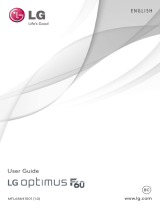
3
Getting to know the viewfi nder ..............59
Take Pictures .........................................60
Record Videos ........................................60
Camera and Video Settings...................61
Multi-point Autofocus ...........................62
Dual .................................................... 62
Gesture shot ........................................63
Super Zooming ....................................63
View Your Pictures ...............................64
Gallery Options ....................................64
Assign Pictures ....................................65
Video Options ......................................66
Live Zoom ...........................................67
Dual Play ...............................................68
Gallery ................................................... 68
Working with photos ............................69
To share a video ..................................70
To delete a video ..................................70
QSlide while playing videos ..................70
Function ..................................................71
QuickMemo+ .........................................71
Using the QuickMemo+ options ............72
Viewing the saved QuickMemo+ ..........72
QSlide ....................................................73
QuickRemote .........................................74
Smart Keyboard .....................................75
Move cursor using space bar ................75
Enter suggested word using gesture
control ................................................75
LG SmartWorld ......................................76
How to Get to LG SmartWorld from
Your Phone ..........................................76
Multimedia ..............................................77
Music ....................................................77
Add music fi les to your phone ...............77
Transfer music using Media device
(MTP) .................................................. 77
Playing a song .....................................77
Utilities ....................................................79
Setting your alarm .................................79
Using your calculator .............................79
Adding an event to your calendar ...........79
Voice Recorder ......................................80
Recording a sound or voice ..................80
Sending the voice recording .................80
Tasks ..................................................... 80
Google+ ................................................81
Voice Search..........................................81
Downloads ............................................81
The Web ..................................................82
Internet .................................................. 82
Using the Web toolbar ..........................82
Viewing webpages ...............................82
Opening a page ...................................82
Searching the web by voice ..................83
Bookmarks ..........................................83
History ................................................83
Using Popup Browser ...........................83
Chrome .................................................84
























